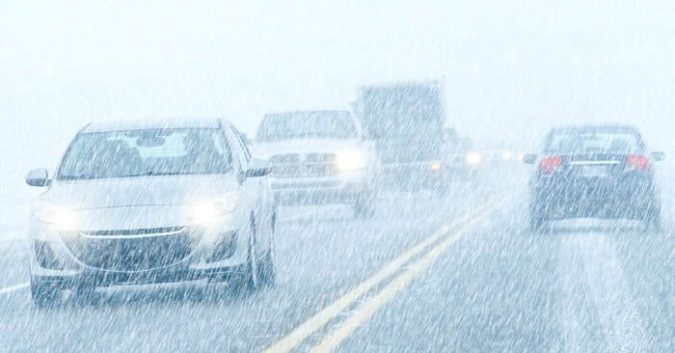Whether you’re a seasoned driver or you recently got your license, there’s one thing that can make any driver grip the steering wheel a little tighter: inclement winter weather.
Mother Nature definitely visits certain regions more frequently and intensely than others, but all licensed drivers need to be sure they know how to operate a motor vehicle in any type of weather—both for their own safety and for the safety of others on the road.
Before You Hit the Road
Winter is not the time to let critical car maintenance and repairs fall off your list of priorities. If your car is unsafe in sunny, clear weather, you can almost guarantee that the cold bite of winter isn’t going to help matters. Very cold weather can also affect how your car functions – so before you hit the road:
- Inspect your tires and replace them if necessary. Consult your car’s manual to ensure the tires are properly inflated and that the tread is at least one-sixteenth of an inch deep. If you’re not comfortable doing this, ask your mechanic to take a look.
- Have your car’s battery checked. Winter is tough on car batteries—when the temperature plummets, a battery’s power also decreases. Unfortunately, gas-powered vehicles actually need more power to start in the cold.
- Stop to fuel up if you have less than half a tank of gas. Very cold temperatures can cause condensation to build up in a gas tank that is almost empty. When that condensation freezes, this can cause a fuel line “freeze-up” that can prevent the car from starting.
- Create a winter driving kit for your car. AAA is known for coming to the aid of stranded drivers, so its employees know firsthand which things are helpful to keep in your car—just in case of emergency. They recommend a small snow shovel, a snow brush, an ice scraper, booster cables, a warm blanket, gloves, a flashlight, window-washing solvent, a bag of abrasive material (like sand, salt, or cat litter), traction mats, paper towels, warning flares, and a cell phone.
Driving in Winter Weather
Operating a motor vehicle in bad weather isn’t an ideal scenario, but with a little extra knowledge, you’ll feel much better about driving when the next winter storm strikes.
- Slow down! If the roads are wet, icy, or covered in snow, you’re not going to get anywhere quickly. Accept that you’re going to need a little extra time to get to your destination and do everything a bit more slowly than you normally would.
- If your car starts to skid, steer into it. The National Highway Traffic Safety Administration (NHTSA) advises you to stay calm, ease your foot off the gas, and carefully steer in the direction you want the front of your vehicle to go. Try not to brake or hit the gas until you feel you’re in control of your car again.
- Increase your following distance. The recommended following distance on dry pavement is the distance you travel in three to four seconds. AAA notes that this should be increased to what you would cover in eight to 10 seconds in inclement weather to allow extra room for stopping if needed.
- Look out for black ice. The National Traffic Safety Institute reminds drivers that bridges and overpasses may freeze before the regular roadway does. Keep an eye out for areas of the road that look black and shiny—they may be covered in dangerous black ice. When you see these spots, either try to safely avoid them, or slow down and keep your foot off the brake pedal.
The Best Tip for Driving in Winter Weather
The best tip? If the weather outside looks questionable and you are worried about getting from Point A to Point B safely, just stay home.
